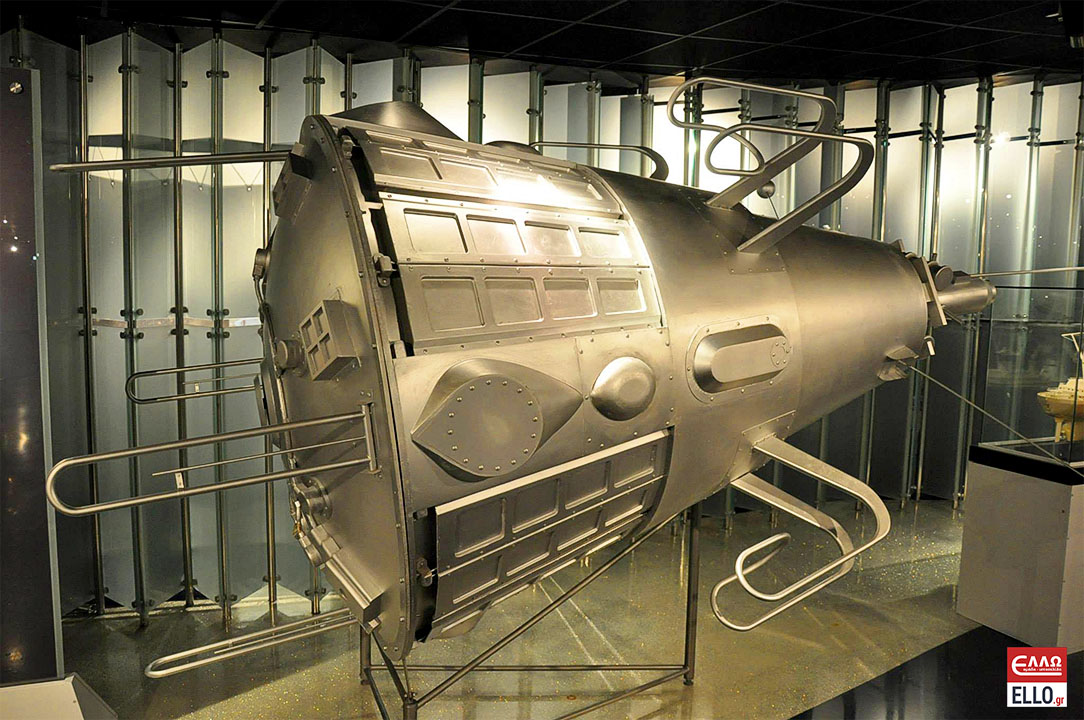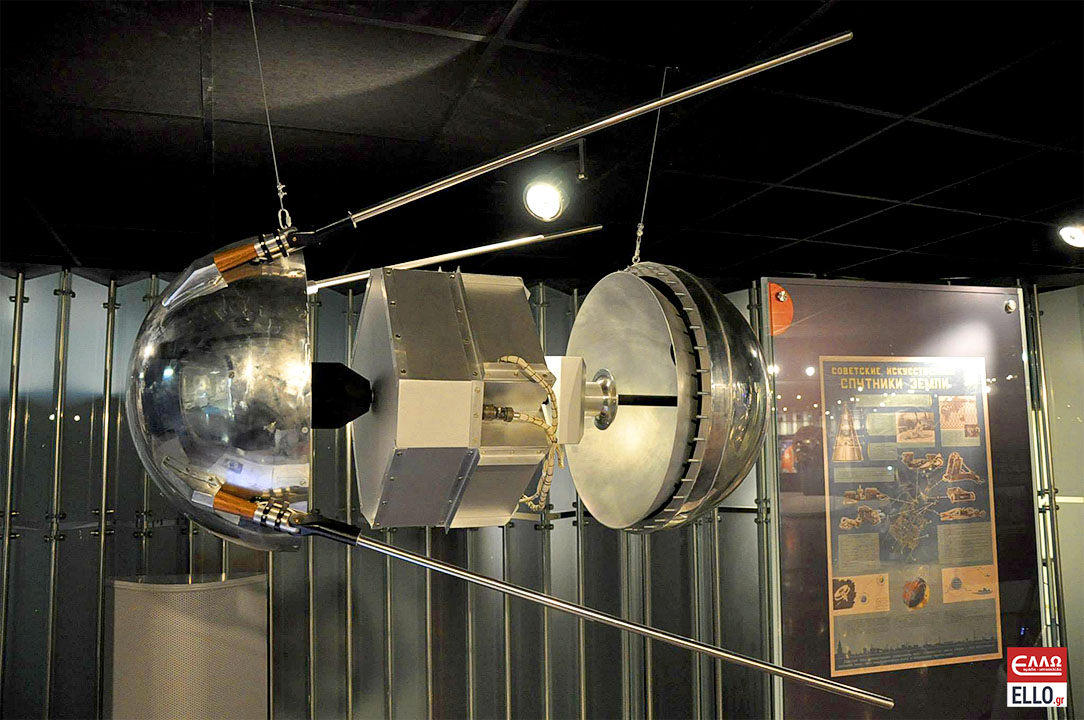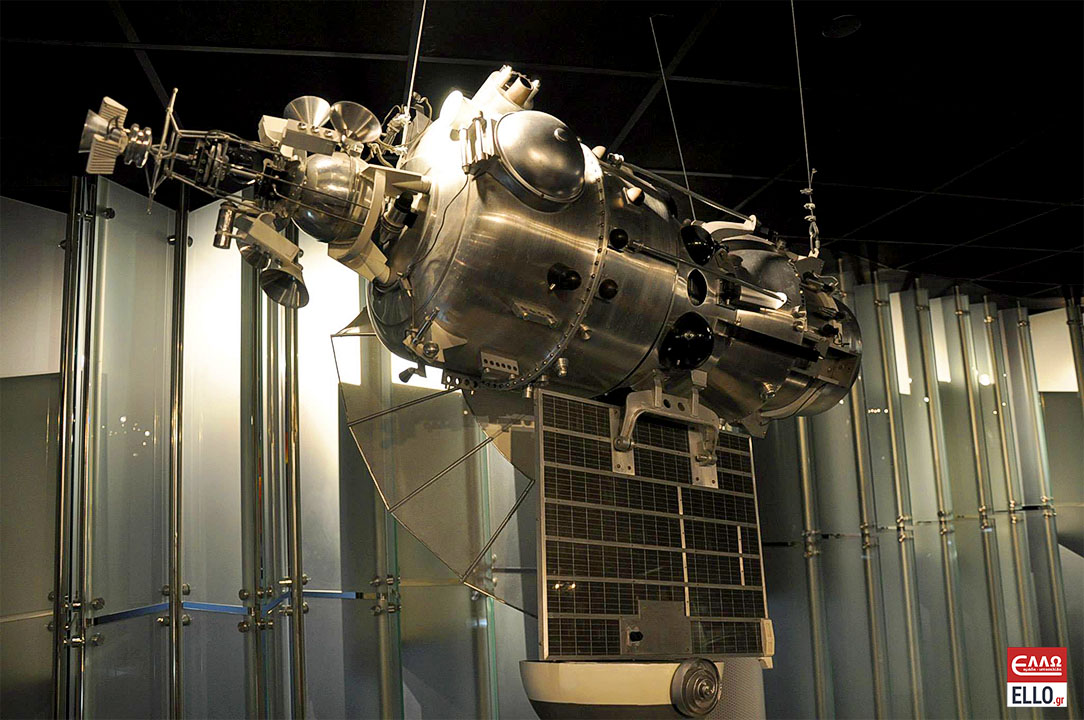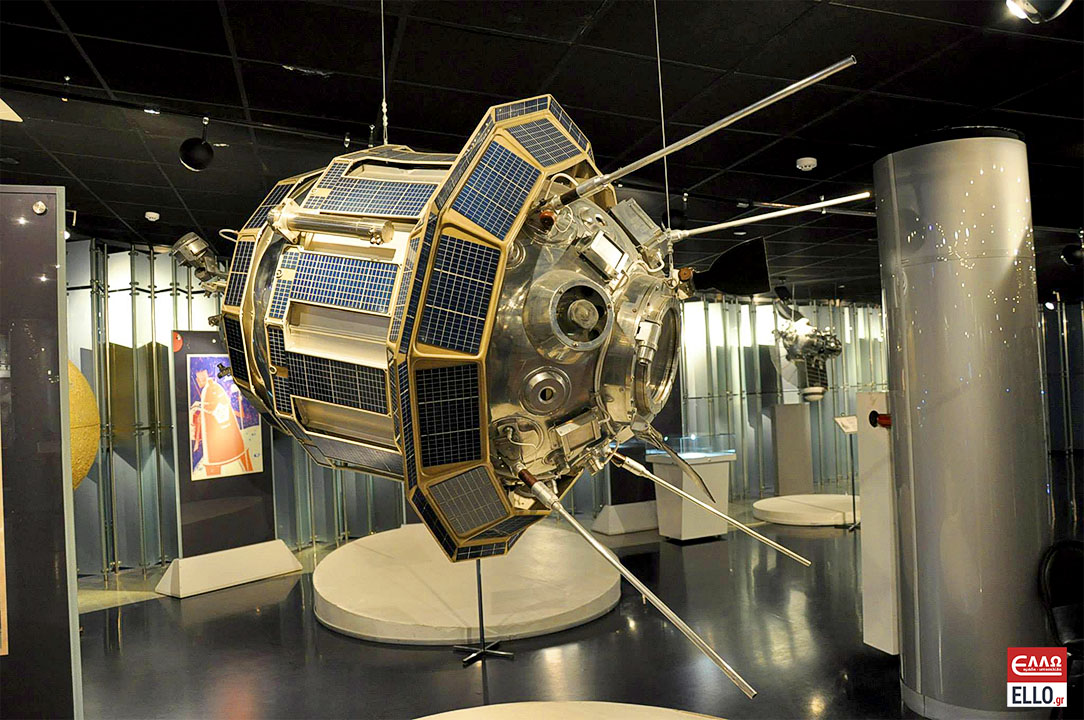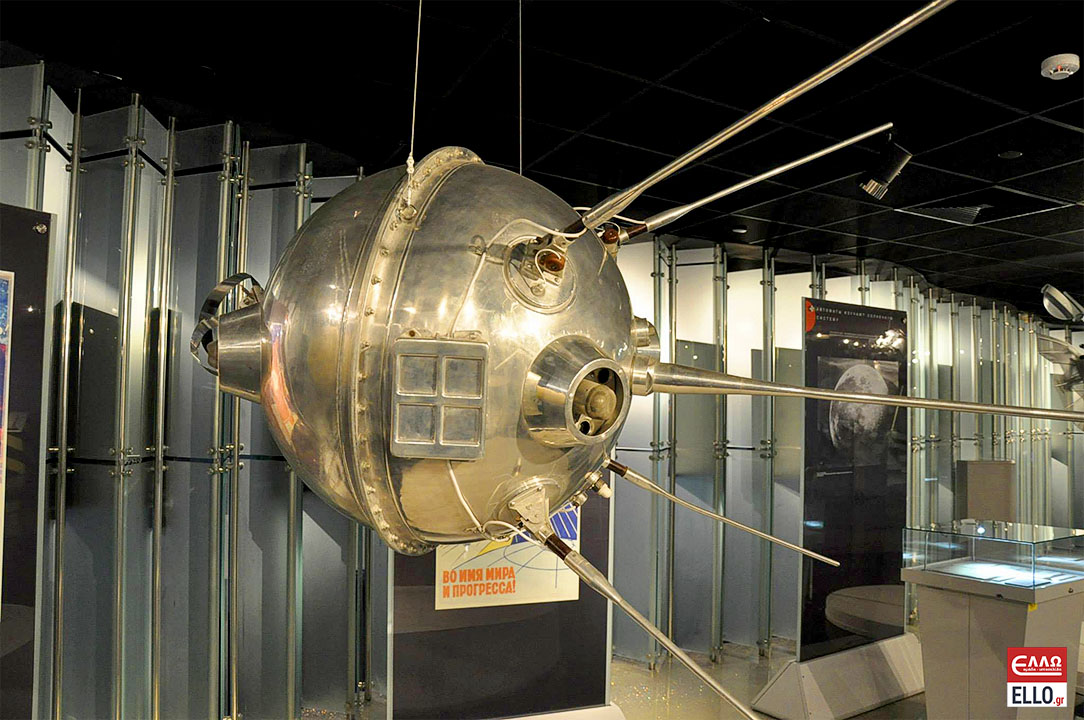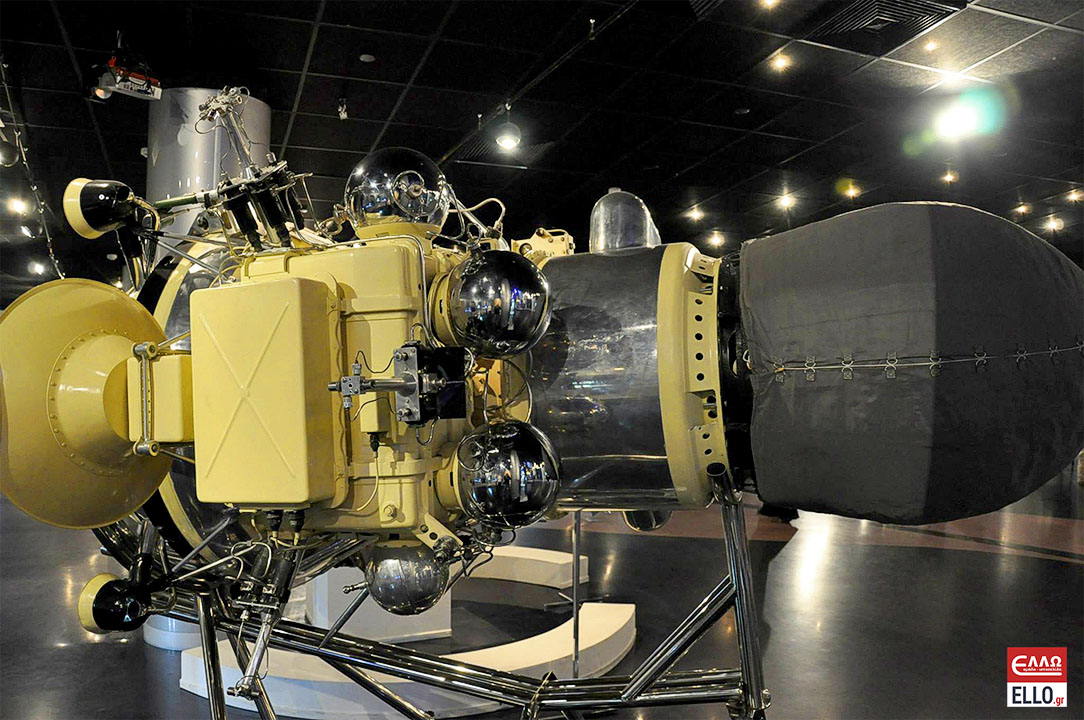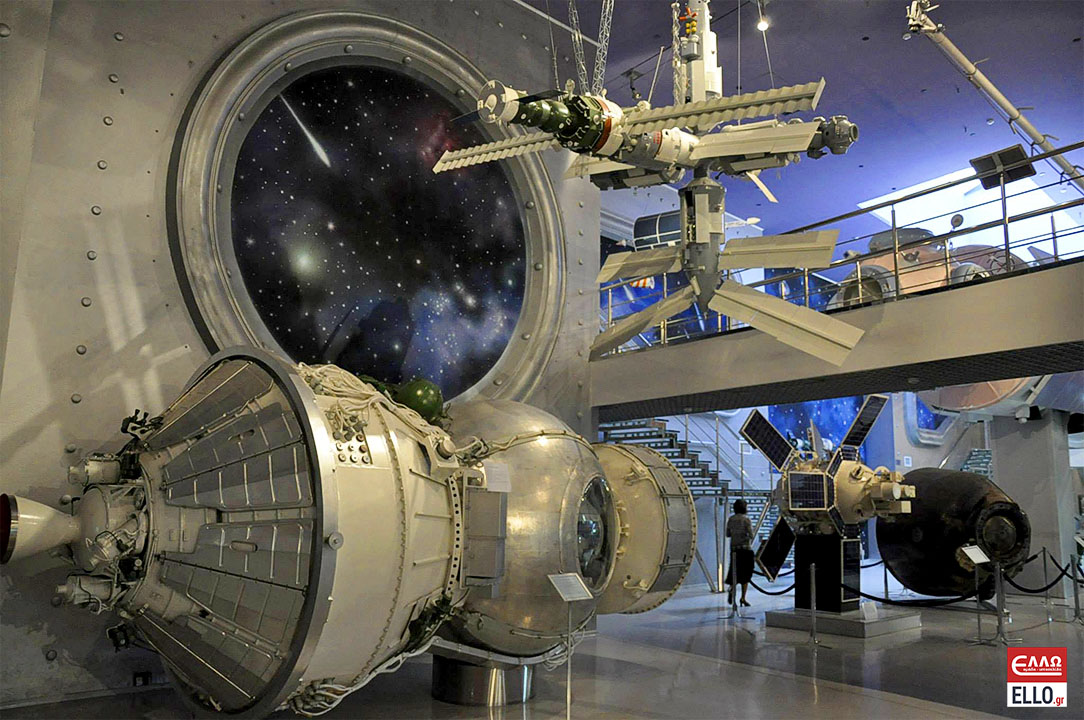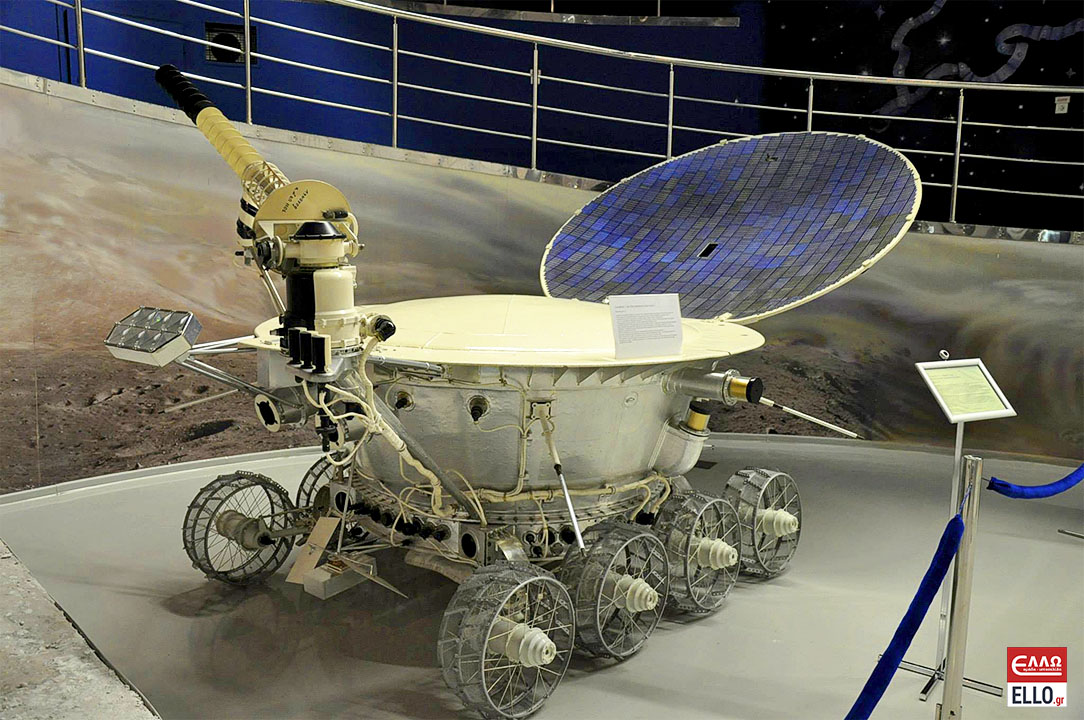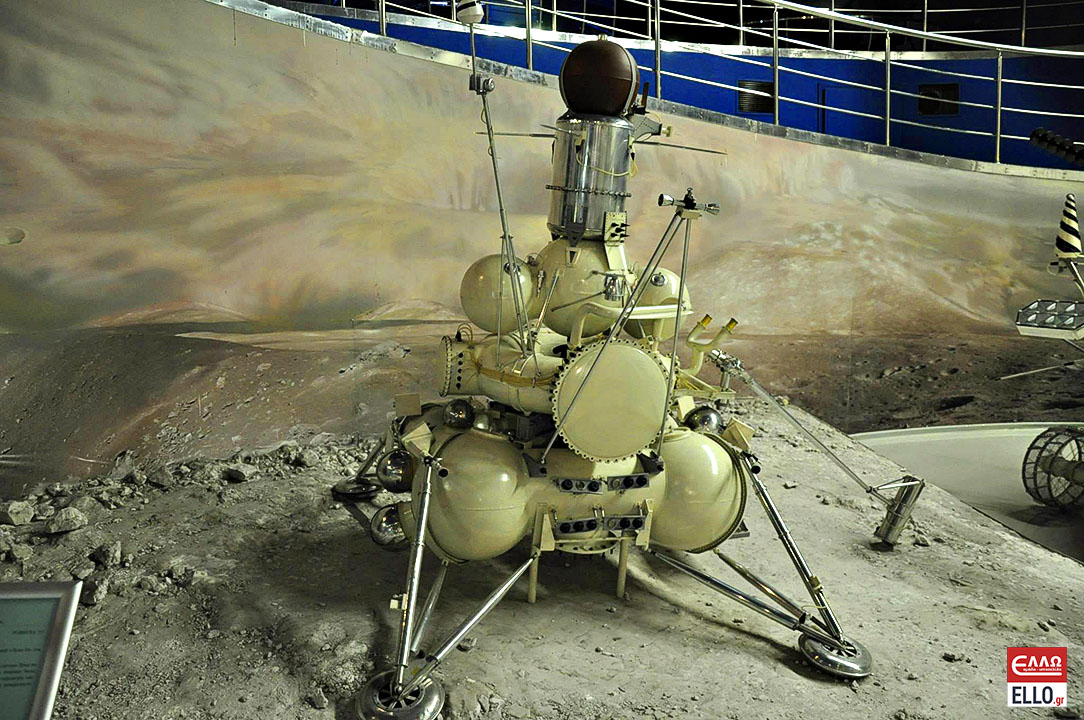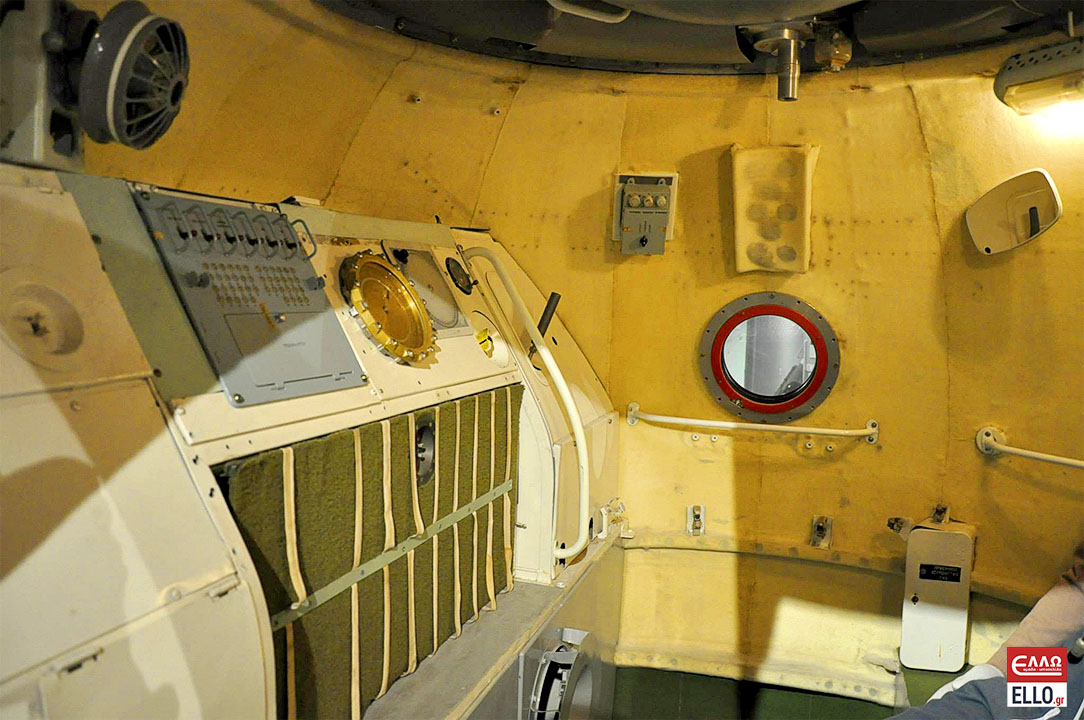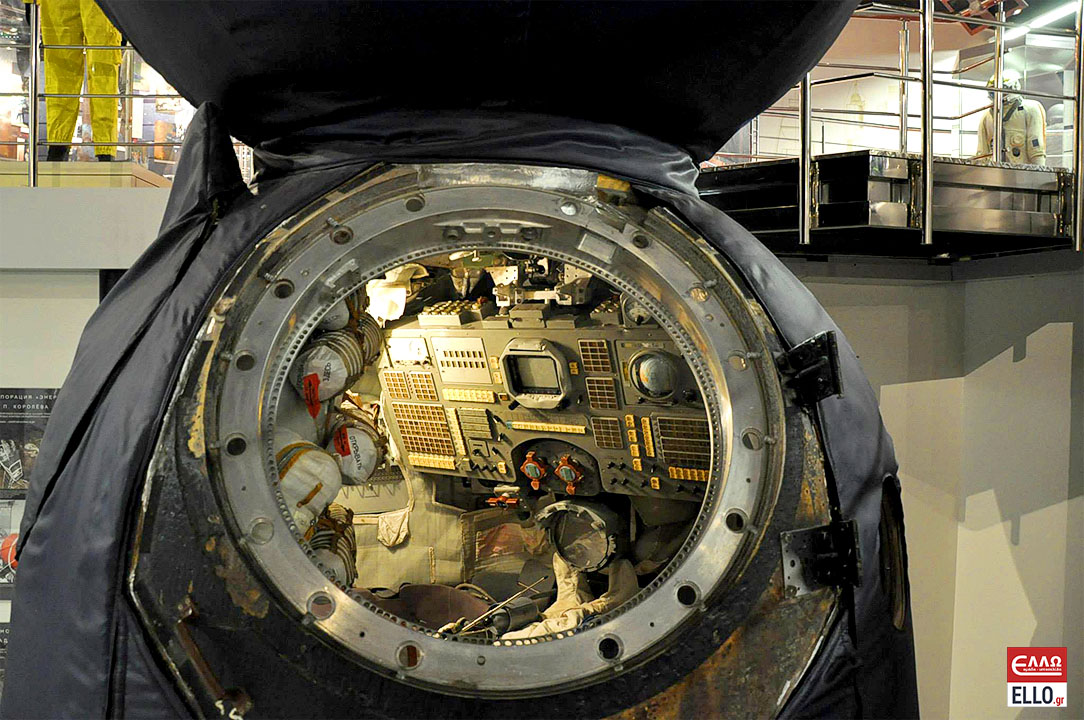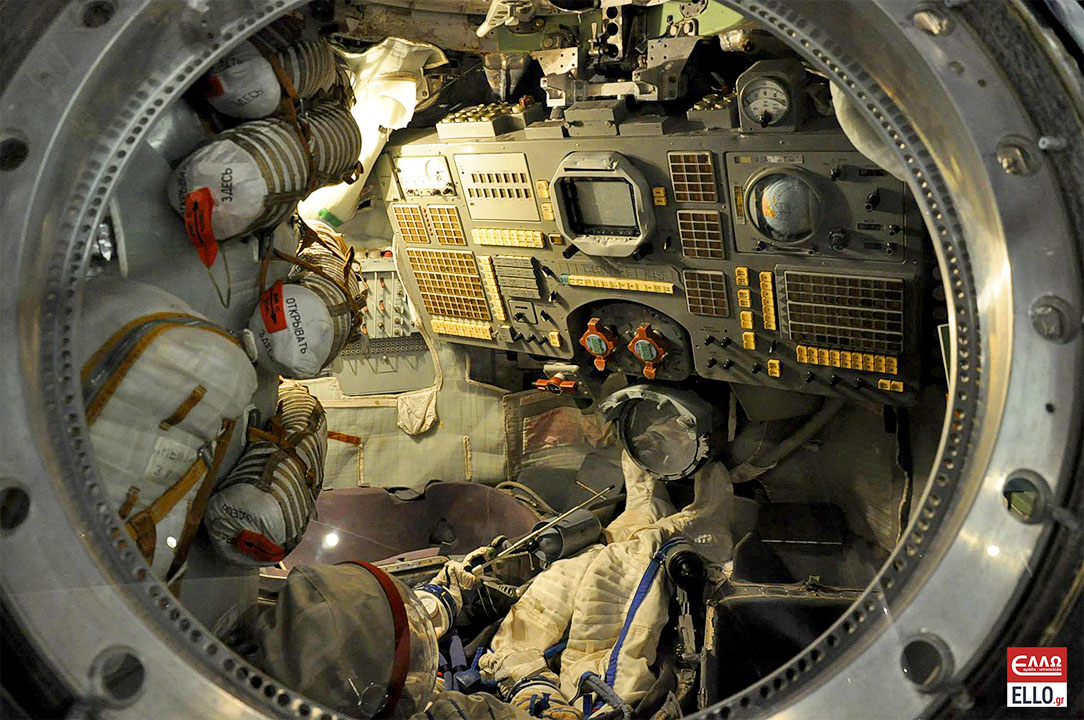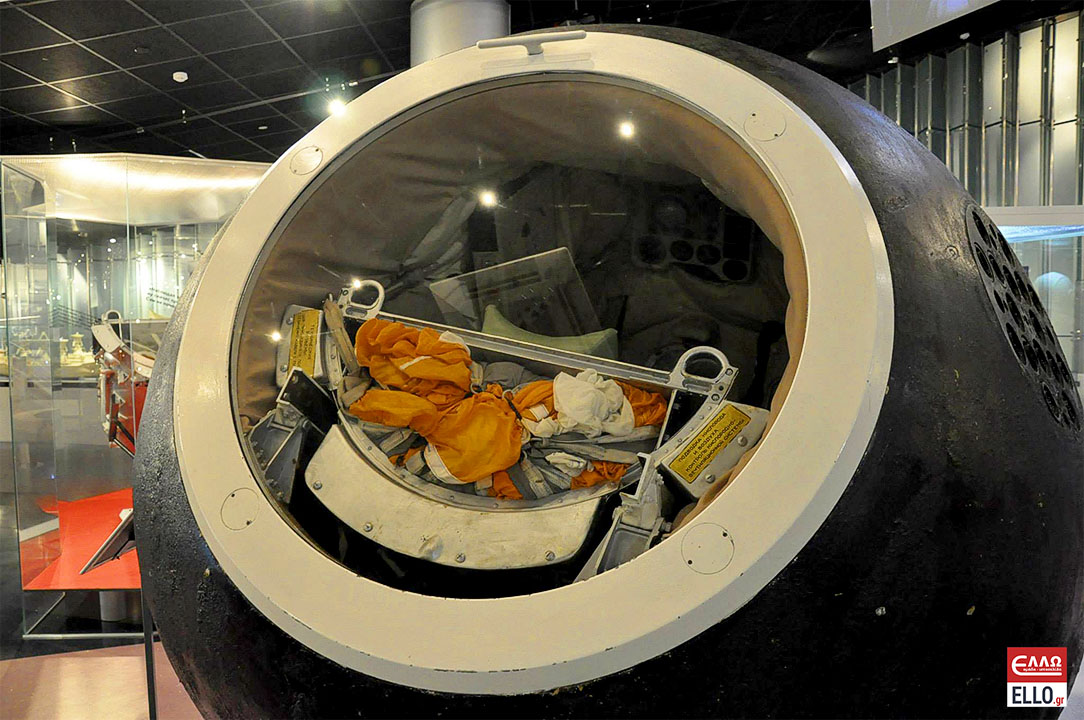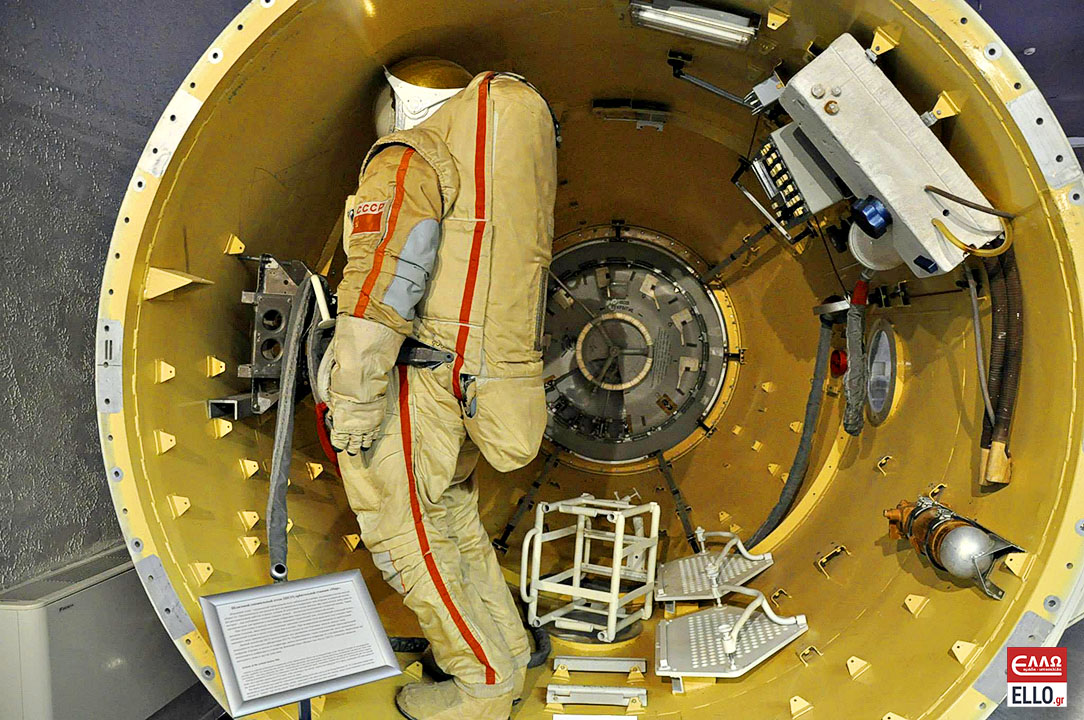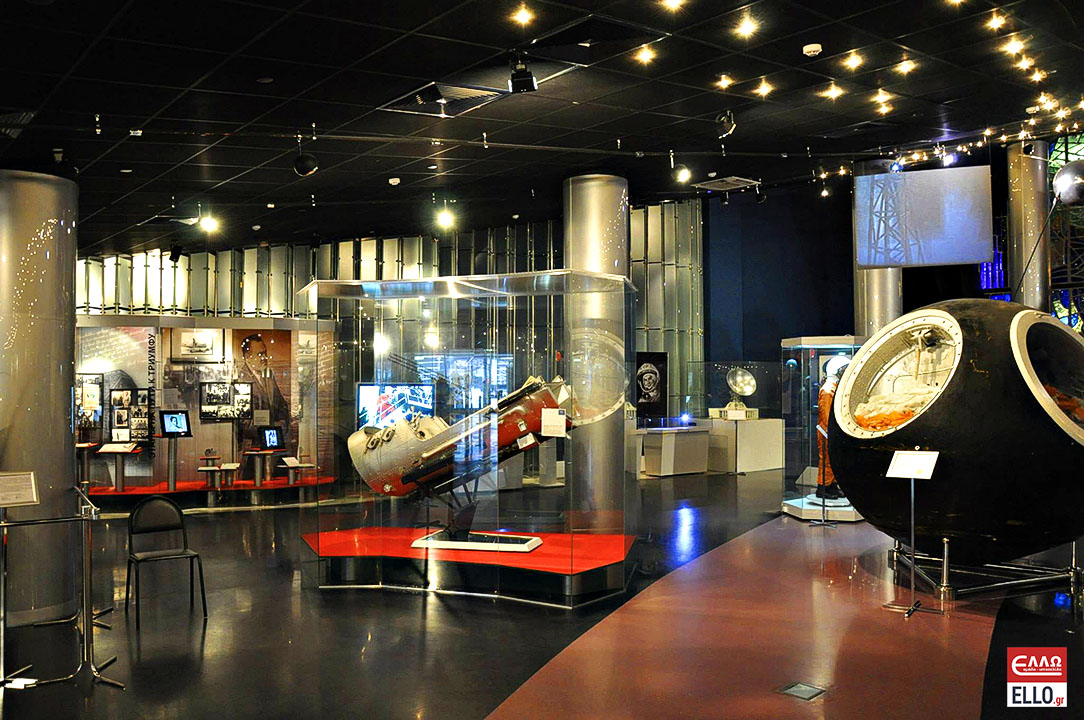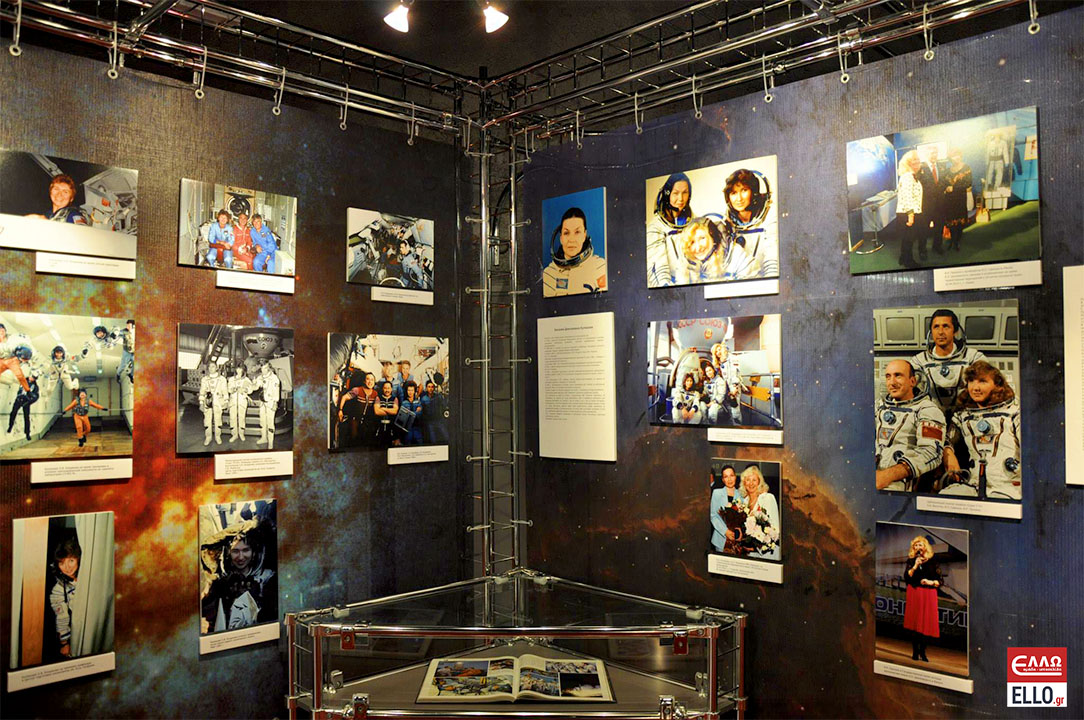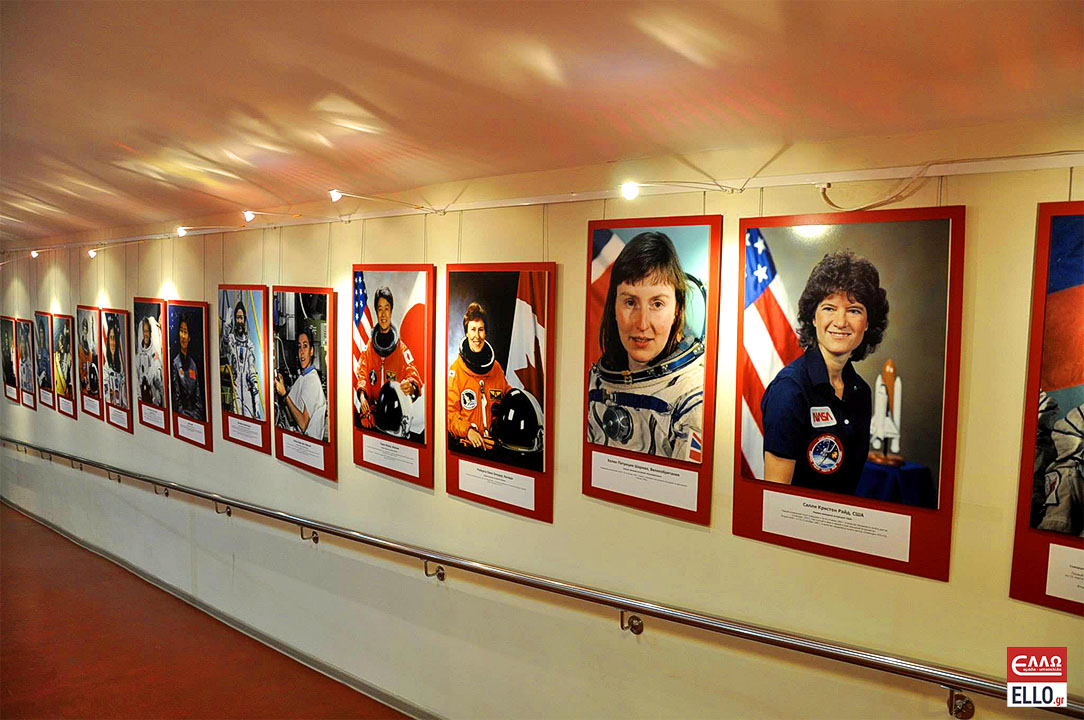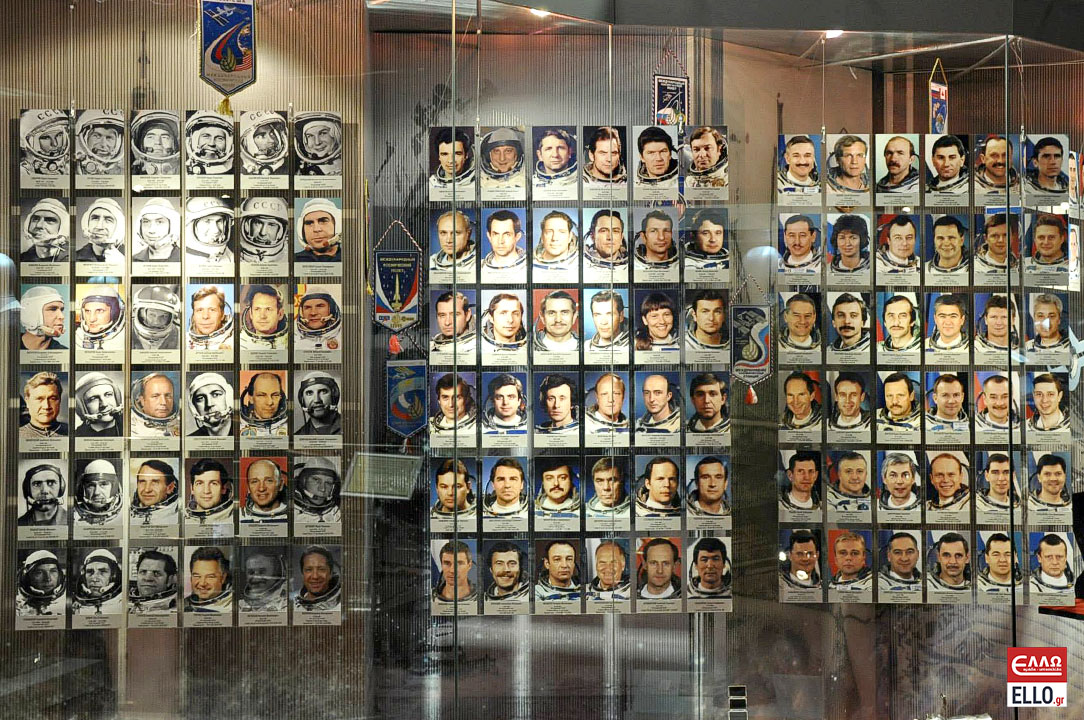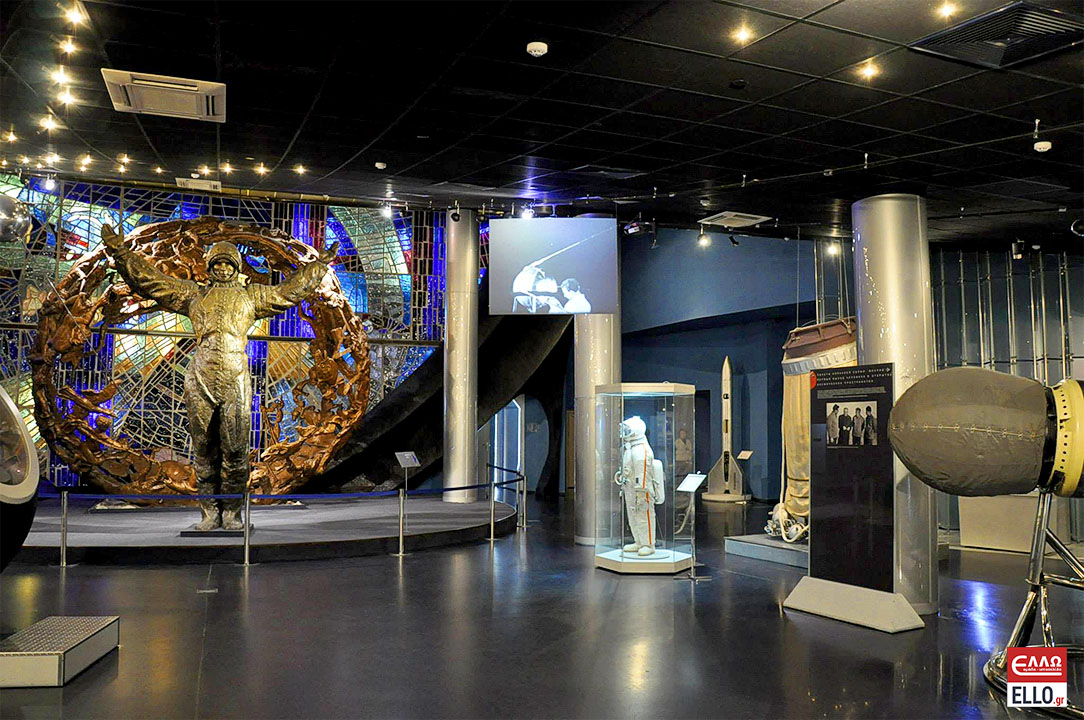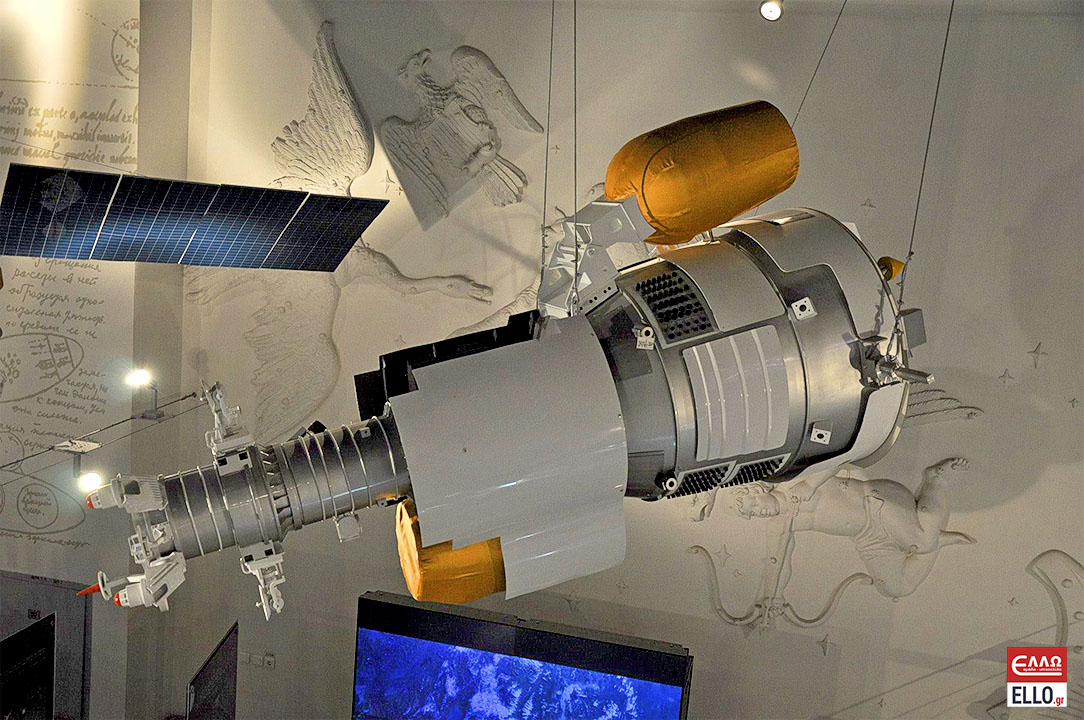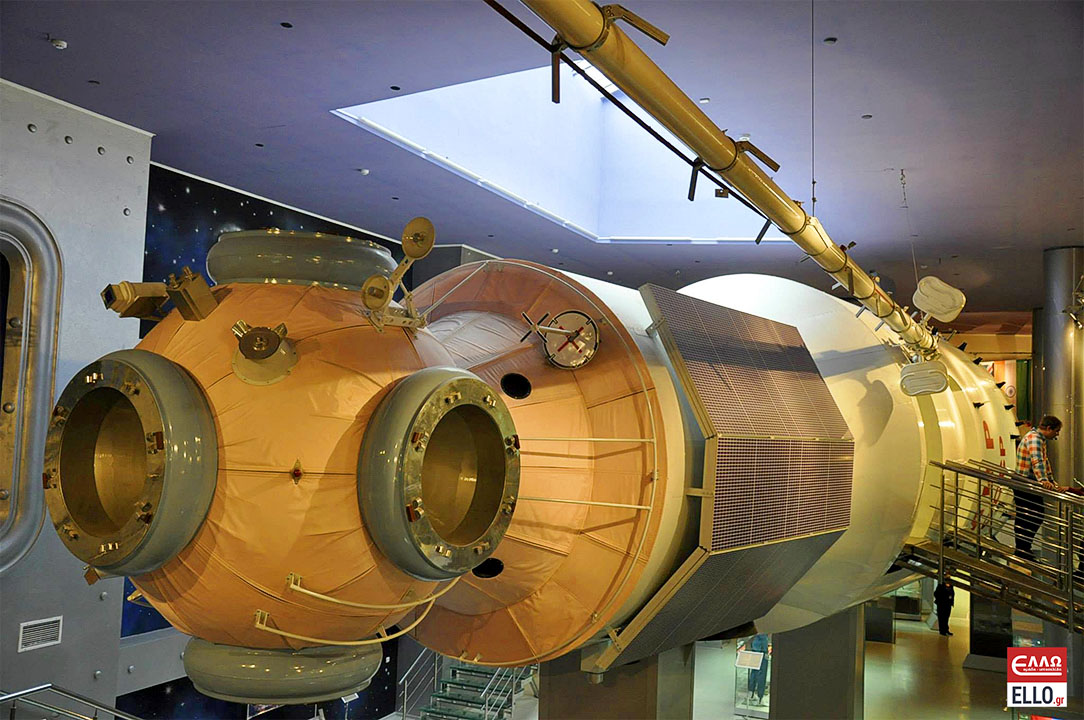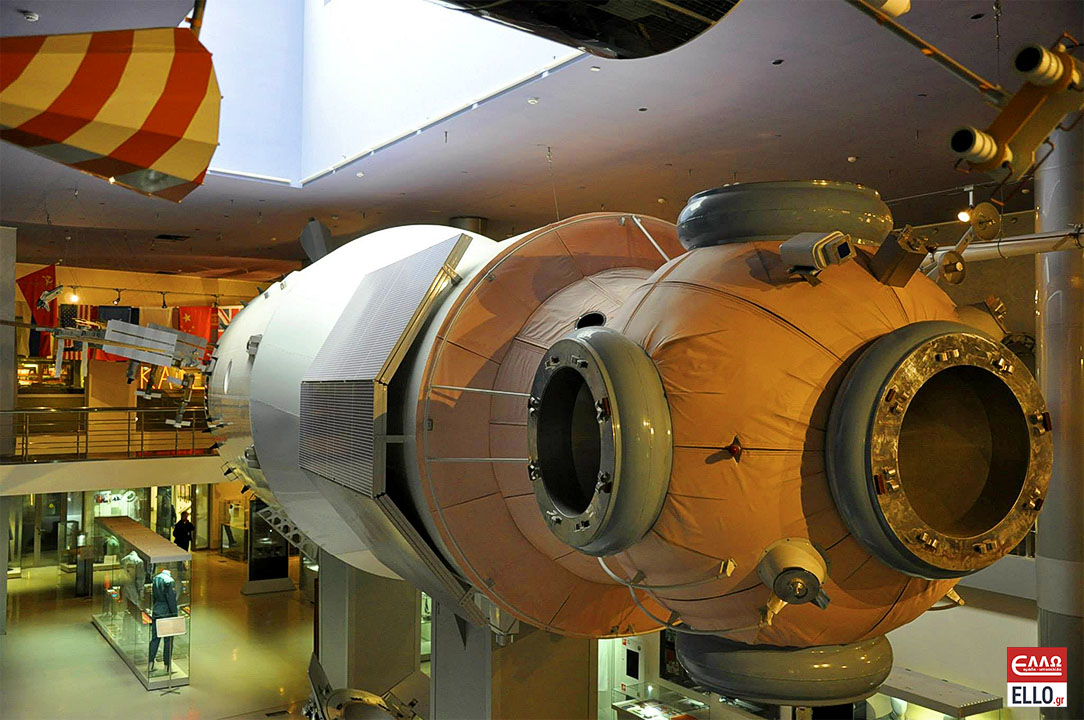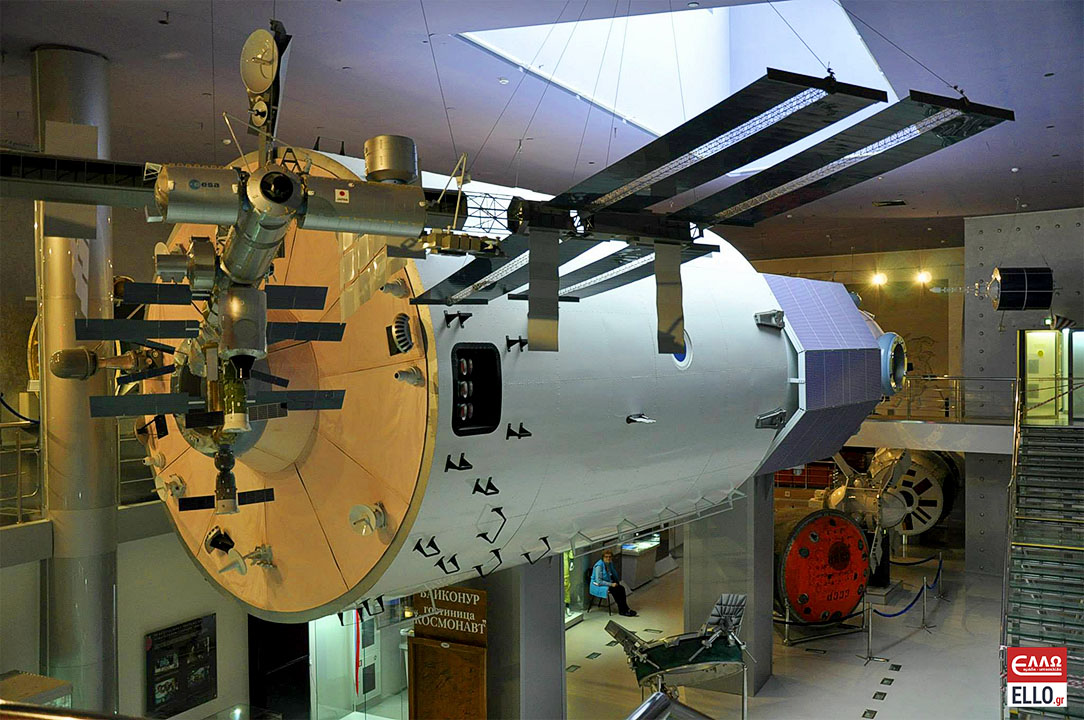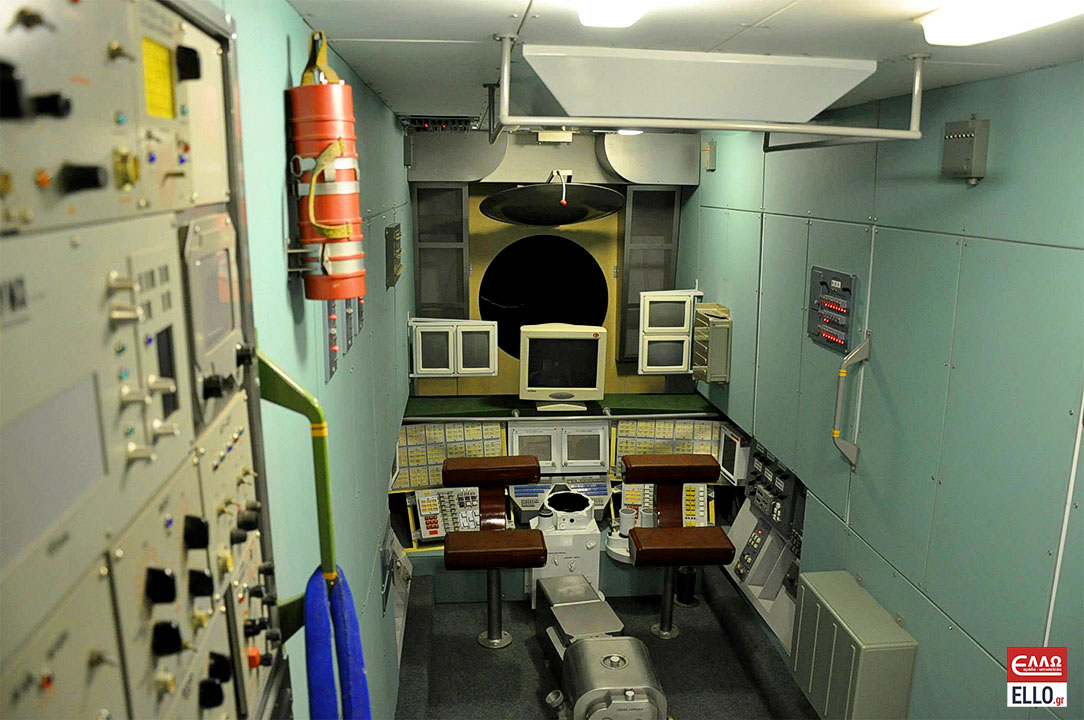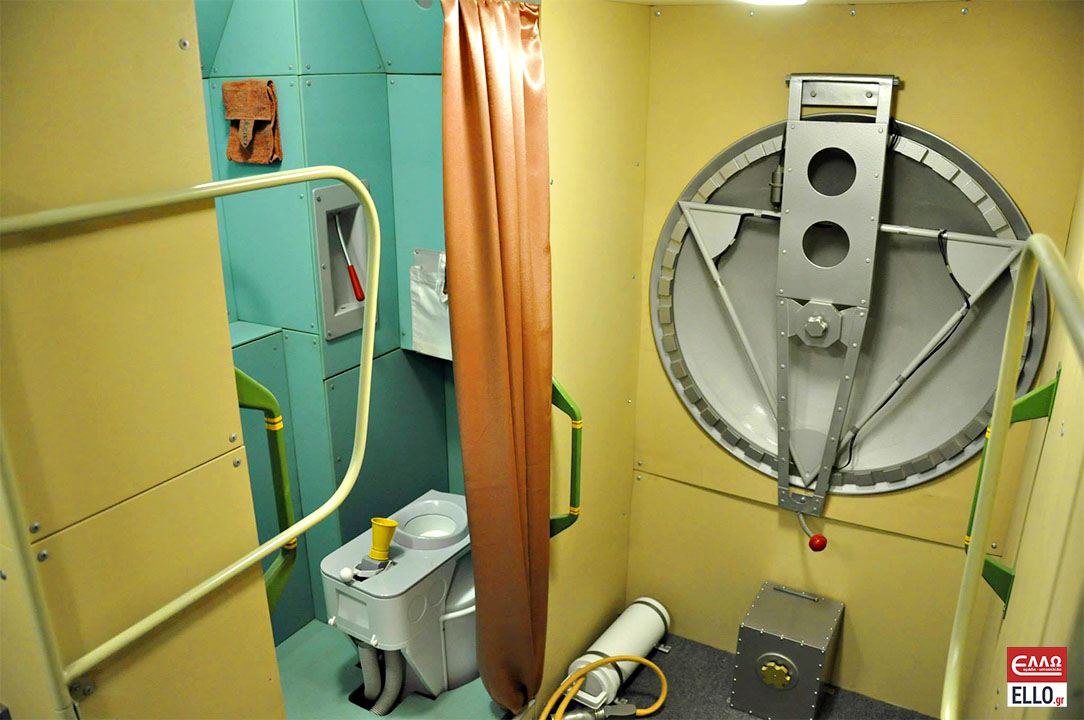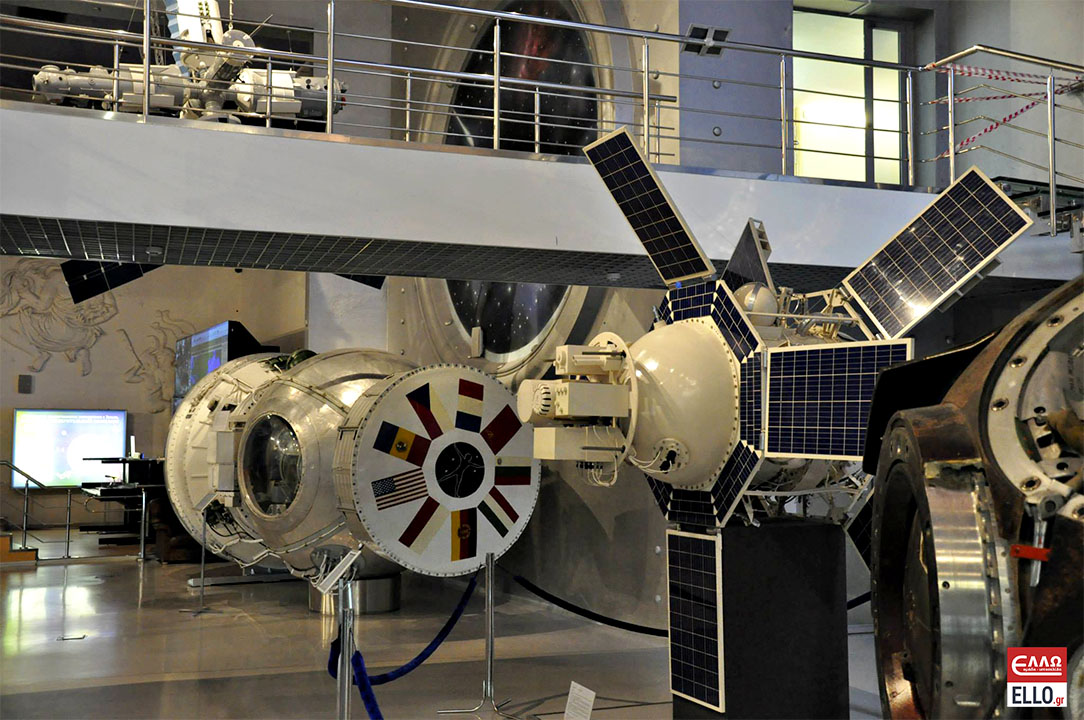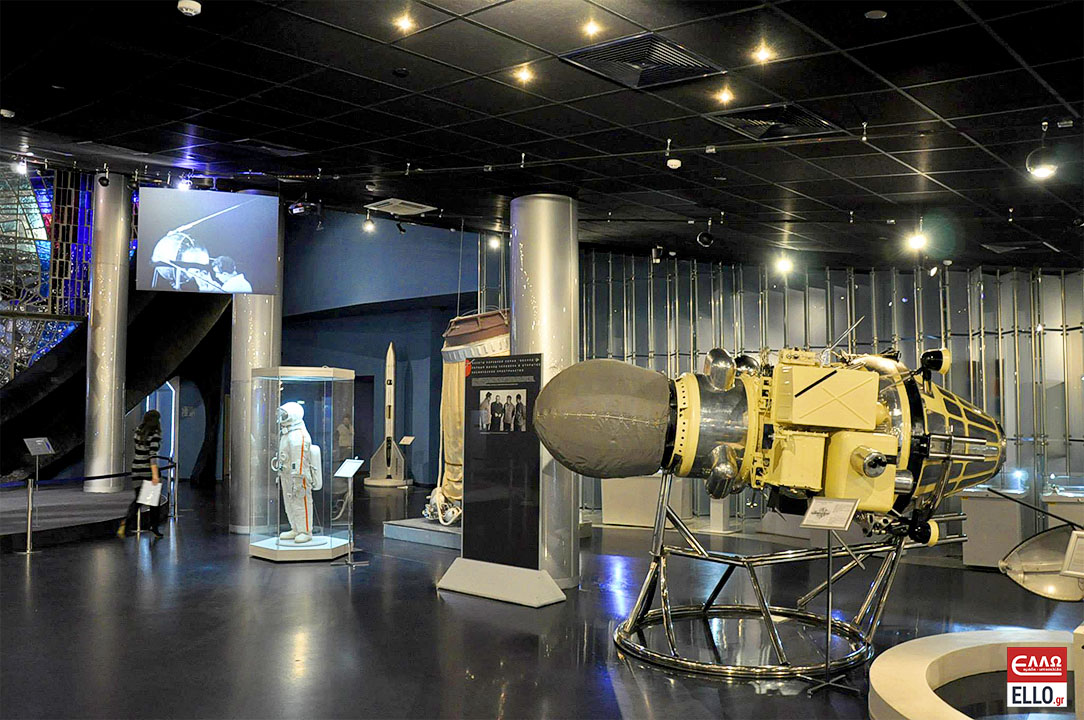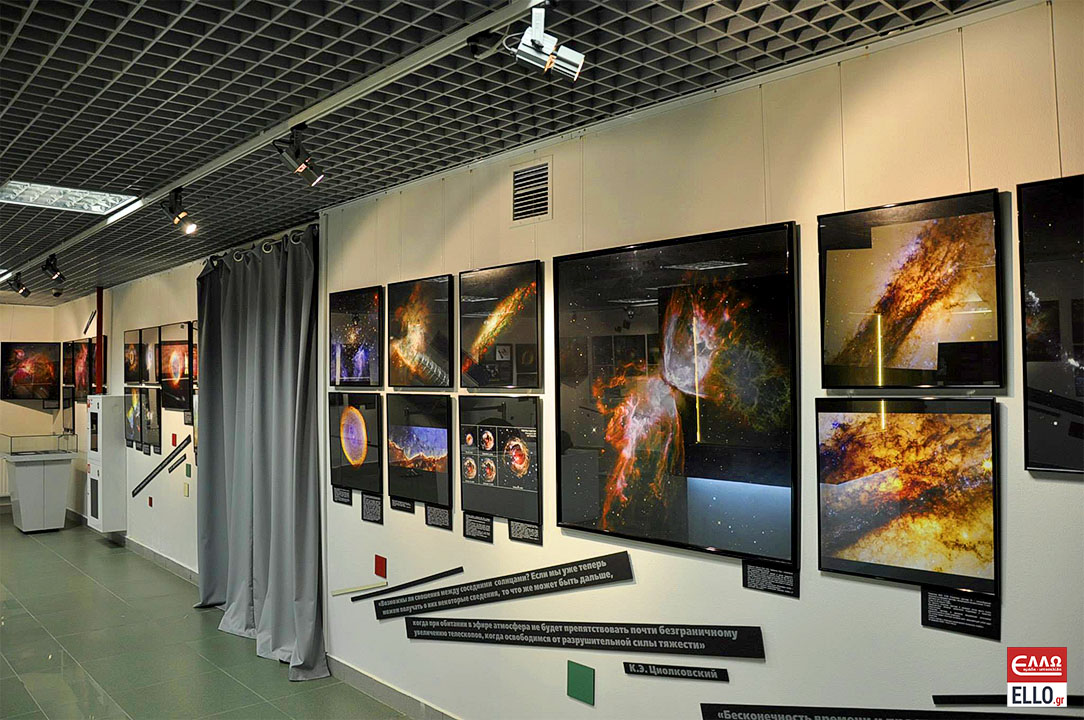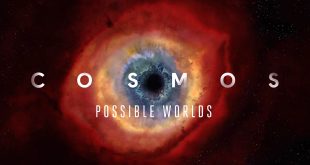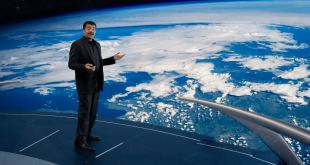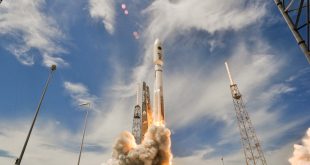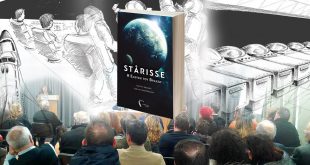Είχαμε την τύχη να επισκεφτούμε πρόσφατα το Μουσείο Μνήμης της Κοσμοναυτικής στη Μόσχα και μείναμε έκπληκτοι, τόσο από τα εκθέματα, όσο και από τους σχολιασμούς των εκθεμάτων που αφορούν τις “πρωτιές” σε παγκόσμιο επίπεδο.
Το Μουσείο Μνήμης της Κοσμοναυτικής
(επίσης γνωστό ως το Μουσείο Μνήμης της Αστροναυτικής ή Μουσείο Μνήμης της Εξερεύνησης του Διαστήματος, Ρωσικά Мемориальный музей космонавтики) είναι ένα μουσείο στη Μόσχα, στη Ρωσία, αφιερωμένο στην εξερεύνηση του διαστήματος. Βρίσκεται στο υπόγειο του μουσείου «Μνημείο για τους κατακτητές του Διαστήματος» (монумента «Покорителям космоса»), στα βορειοανατολικά της πόλης και κάτω από το αντίστοιχο μνημείο, το οποίο είναι ένα από τα πιο διάσημα μνημεία της Μόσχας. Το μνημείο είναι κατασκευασμένο από στιλβωμένο τιτάνιο, υλικό που χρησιμοποιείται σε πυράβλους. Το υψόμετρο του μνημείου είναι 110 μέτρα, με κλίση 77 μοίρες. Το μουσείου καταλαμβάνει 8.500 τετραγωνικά μέτρα, εκ των οποίων τα 4.000 τετραγωνικά μέτρα αποτελούν τα εκθέματα.
Το Μουσείο Μνήμης της Κοσμοναυτικής εγκαινιάστηκε στις 10 Απριλίου 1981 για την 20η επέτειο της πτήσης στο διάστημα του Y. Gagarin. Στα εκθέματα του μουσείου συμπεριλαμβάνεται αντίγραφο του διαστημικού σταθμού ΜΙΡ (που έπεσε πρόσφατα), αντίγραφα αλλά και αυθεντικοί δορυφόροι, διαστημικός εξοπλισμός, προσωπικά αντικείμενα των αστροναυτών και των μηχανικών, αρχειακά έγγραφα και περιέχει μια ευρεία ποικιλία που σχετίζεται με τα εκθέματα και τα μοντέλα που αφορούν την ιστορία της διαστημικής πτήσης, την αστρονομία, την εξερεύνηση του διαστήματος, την διαστημική τεχνολογία και πολλά άλλα.
Σύμφωνα με το Ρωσικό τουριστικό συμβούλιο, η συλλογή του Μουσείου κατέχει περίπου 85.000 διαφορετικά είδη, και δέχεται περίπου 300.000 επισκέπτες ετησίως.
ΔΕΙΤΕ ΤΙΣ ΦΩΤΟΓΡΑΦΙΕΣ:
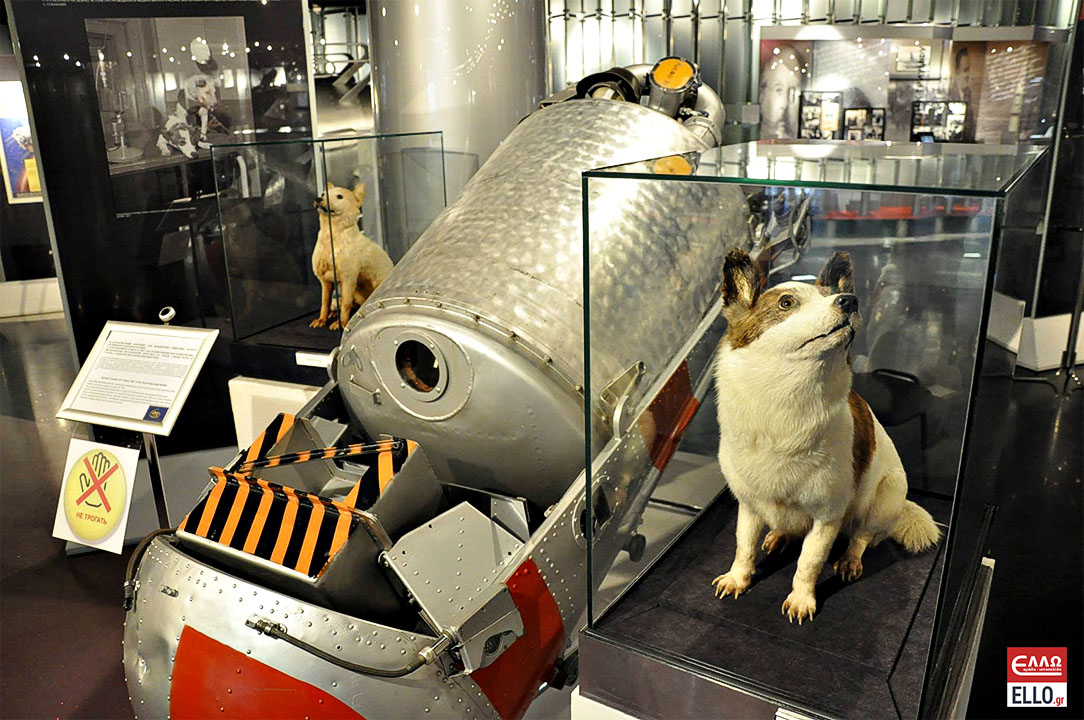
Ejection Container for “Guinea Pigs” of the Second Spaceship-Satelite. Dogs Belka and Strelka returned back to Earth in this container after completion of bio-medical experiments program on August 20, 1960. The second spacecraft-satellite was launched on August 19, 1960 and was for the program of human space mission. Ejection container for animals was a model for cosmonaut’s ejection seat. There was a cabin for animals with automated feeding machine, toilet and ventilation system, ejector and parachute system, radio beacon for the catapult and other hardware. The container was ejected during spacecraft descent at an altitude of seven kilometers.
Third Earth Satellite. The first ever automated space station with wide-range complex studies. It was launched by Sputnik launch-vehicle from Baikonour cosmodrome on May 15, 1958. It stayed in orbit till April 6, 1960. Mock-up. Scale 1:1.
The first Earth Sputnik. It was launched from Baikonour cosmodrome on October 4, 1957. It lasted 92 days and made approximately 1,400 orbits around Earth. It reentered Earth’s atmosphere and ceased to exist on January, 1958. Mock-up. Scale 1:1.
Automated Inter-Planetary Mars-1 Station. It was the first ever space probe to be sent to Mars. It was launched by Molniya launch-vehicle on November 1, 1962. Model, scale 1:3.
Automated Luna-3 station was the first in the world automated station with attitude control system in outer space. It was launched on October 4, 1959. It orbited the Moon for first time and transmitted photo televised image of the dark side of the Moon. It was launched by Vostok launch-vehicle. Mock-up. Scale 1:1.
Automated Luna-1 Station was the first in the world space vehicle that could accelerate to second space velocity. It was lunched to the Moon on January 2, 1959. Passing closely by the Moon (5,000-6,000 km), and after lift-out from Earth’s orbit, it became the first solar satellite. The station provided data on Earth radiation belt and outer space. It was launched by Vostok launch-vehicle. Model, scale 1:1.
Automated Luna-9 Station. Descent capsule of the station made the first ever soft landing on the Moon (Ocean of Storms) on February 3, 1966, and sent panoramic view of lunar surface to Earth. It was launched by Molniya launch-vehicle with L upper stage. Mock-up. Scale 1:1.
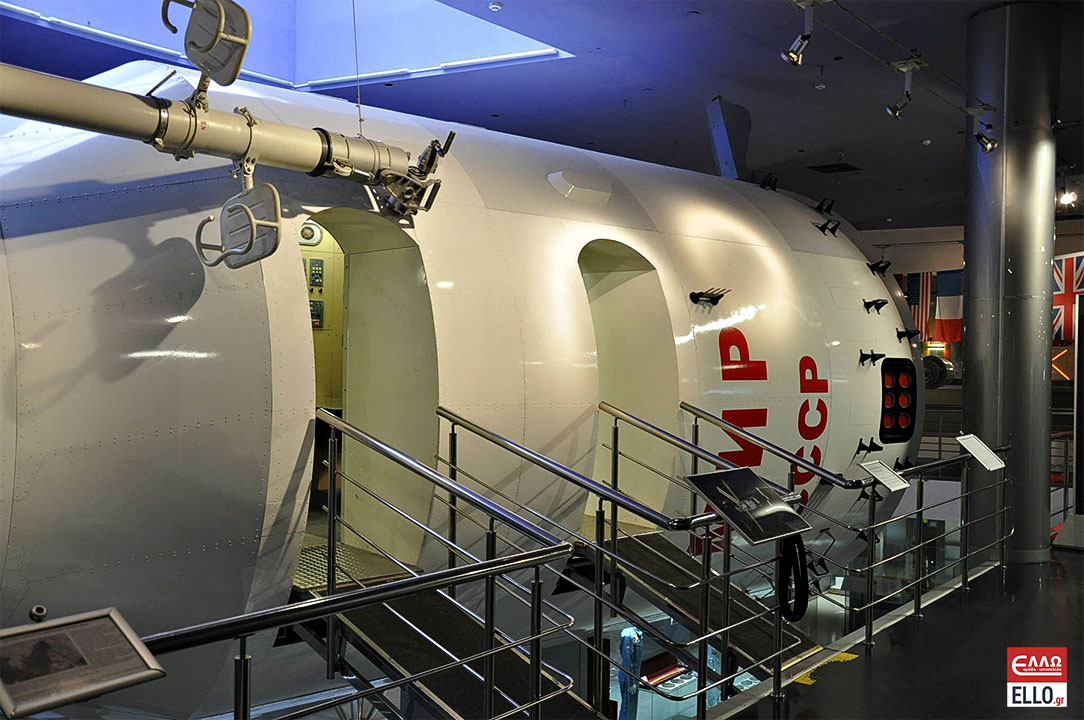
Core Module of the Orbital Station Mir. Mock-up. Scale 1:1. Core Module was the first element of the Mir Station. It was launched by Proton launch-vehicle on March 20, 1986. That launch started unprecedented assembly of Low-Earth orbit (LEO) multi-task ongoing operational piloted module-type complex. Core Module a key joint of the whole orbital station, uniting all its modules in a common complex. It provided support for the activities of the crew of up to six persons. There was central control post for all flight control system of the station and scientific hardware, and cosmonauts’ living quarters. Core Module comprised of four sections: transfer section with five docking ports, working compartment, transfer chamber with one docking port and unpressurized section. All docking ports were of passive “probe-cone” type. Launch Mass – 20,900 kg. Length -13.128m. Maximum diameter – 4.15 m. Solar Arrays Span – 29.73 m.
Airlock of the orbital station Mir. Airlock is a special pressurized compartment of the orbital station which was an integrated part of the “Kvant-2” module. It was designed to provide capability for extravehicular activity using Orlan spacesuits, and keeping the working and living compartments pressurized. There were two hatches – one intra-vehicular, the other – extravehicular. It also provided systems and volume for storage and donning suits prior to egress. During preparations for the EVA cosmonauts close the intra-vehicular hatch, vacuumize (deplete air) airlock by venting the gas via a special drain valve and then opening the EVA hatch. Mock-up. Scale 1:1.
 hellagen.gr | Επίσημη ιστοσελίδα ερευνητικής ομάδας Π. Ζωγράφου Άφθονη ηλεκτρική ενέργεια με Νερό
hellagen.gr | Επίσημη ιστοσελίδα ερευνητικής ομάδας Π. Ζωγράφου Άφθονη ηλεκτρική ενέργεια με Νερό

